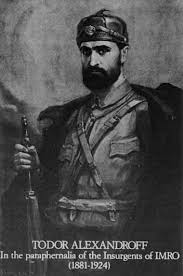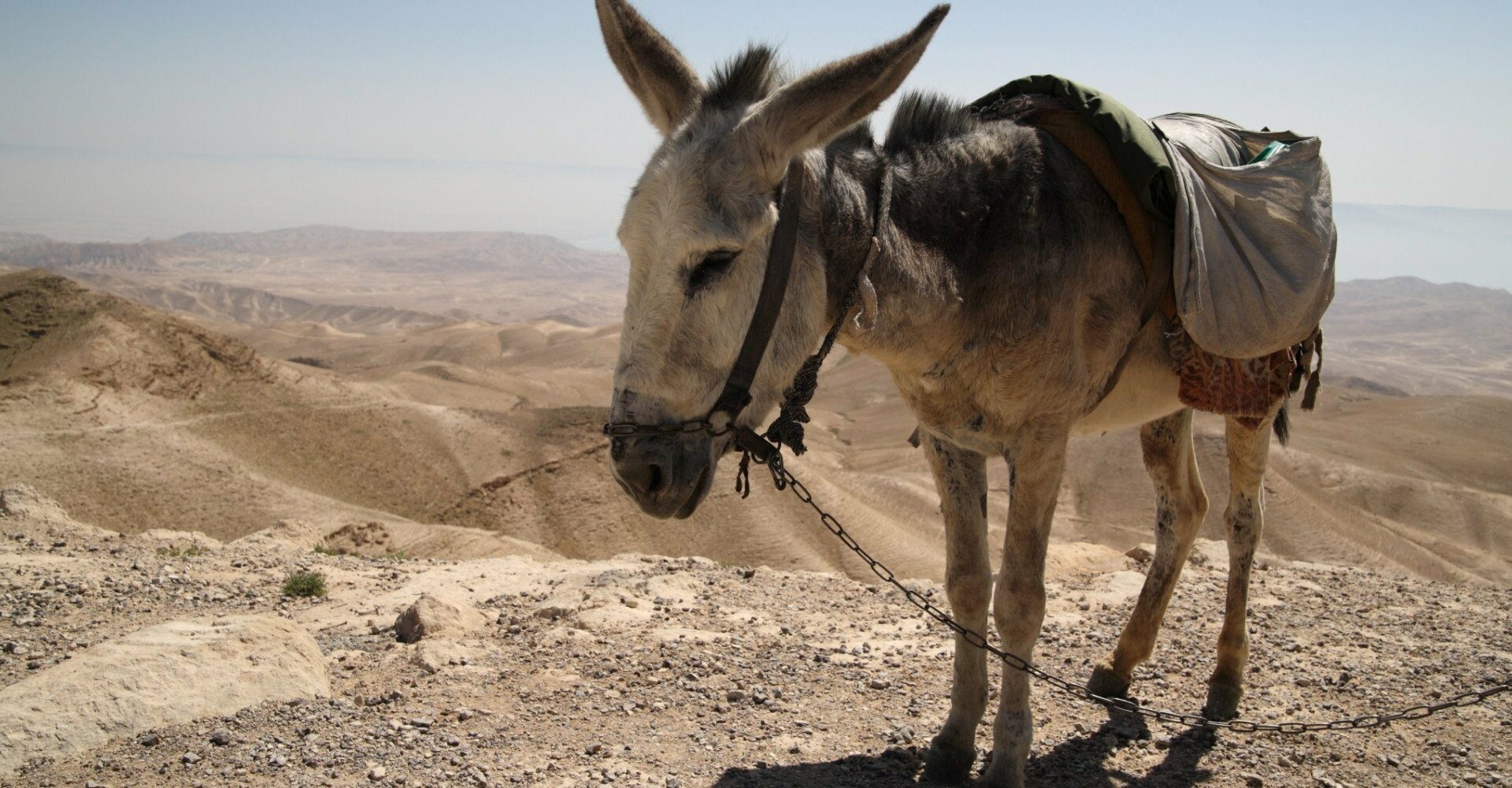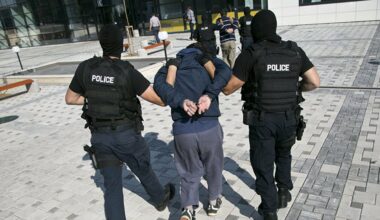Which are the first animals used for terrorism attacks according to you? Where and who used them for terrorism? Have you heard of terrorist attacks carried out with the help of donkeys? We are now going to tell you about the ingenuity of the Bulgarian fighters for freedom against the Turkish oppressors! The very first time in the history that animals were used for terrorism is in 1911 by Bulgarians. Just read this amazing story!
On the morning of the 28th of August 1912 on the road from Strumica to Doiran, Macedonia, a man is leading a donkey carrying a bag of flour. He arrives in Doiran at around 9 AM. Goes to the bazaar. Ties the donkey and silently walks out. It’s a shopping day, but the man isn’t there to sell. That man is Boris Demirdjiev – a participant in the Ilinden uprising and the donkey isn’t carrying flour but dynamite with a timer.
At exactly 9 AM the timer goes off, blowing up the dynamite. Thirteen people are killed and forty-six are injured. All casualties are Turkish and out of the injured only four are Bulgarian. The bazaar gets deserted for minutes, the stores close and everybody hides.
The Bulgarian newspaper “Utro” first reports the donkey terrorist attack in Doiran and quotes an anonymous leader of IMRO. According to him the attack was an act of the Young Turks, whose goal was to compromise the moderate government in Istanbul. The summer of 1912 is indeed a time of fierce political fights in Turkey. The Albanians are rioting the whole year. On the 14th of August 1912 in Mitrovica Isa Byuletinats announces the Albanian independence. The rebels even briefly occupy Skopje. The leaders of the Young Turks’ regime can’t reach a consensus on how to operate. One side wants repressions, another one wants to back down. The government is exposed and resigns. The liberal party comes to power and is able to make compromises with the Albanians.
That is exactly what the leaders of the Internal Macedonian Revolutionary Organization(IMRO), which fights for the liberation of the Bulgarian lands and their population from Turkish occupation and their return to free Bulgaria. After the brief intoxication of Young Turks coup of 1908, when the organization becomes legal, it becomes clear that the goal of the new government is to preserve the empire. In 1911 the Bulgarian revolutionary organization in Macedonia – IMRO is reinstated. The Central Committee includes Petar Chaulev, Hristo Chernopeev and Todor Alexandrov. The three visit Cetina to meet with Albanian leaders.
The organization is completely aware that it doesn’t have the power to win by themselves. It has to rely on external factors. First of all – Bulgaria. Unscrupulous in the choice of means, Todor Alexandrov decides to put pressure on the Bulgarian government by means of the public opinion of the people. His intention is to provoke the Turkish fanaticism to eventual outrage over Bulgarian people and with that cause Bulgaria to go to war for Macedonia with Turkey, while the empire is busy with the Italian-Turkish war and the Albanian uprising.
Todor Alexandrov gives up on the old rebellion tactic and leads the organization on the path to terrorism. In a letter he says that, given the lack of weapons and means needed for impressive guerrilla actions, terrorist attacks are much more favorable. With those operations less people were involved, which made them easier to hide. There were less casualties and also the impact of bomb attacks on the outside world was bigger than that of direct combat. Alexandrov hopes that the attacks cause commotion, fear and insecurity for the European capital which to protect its interests may take, or would allow foreign interference in Turkey.
Specially organized, four member groups are used to carry out the terrorist attacks. That way Todor Alexandrov introduces in the Bulgarian history the urban guerrillas, whose organization and experience is later borrowed and improved by the Communists.
Todor Alexandrov personally trains his people. The planned attacks begin in October 1911. There are seven explosions on train stations and two on the railroads. Three district offices are destroyed – in Kichevo, Krushevo and Konare. The most preferred locations by the Macedonian terrorist are markets. They use donkeys to carry the explosives to a location, which doesn’t rise suspicion and gives the terrorist time to save himself that’s why the attacks stay in history with the name “The donkey attacks”.
The first donkey attack happens on the 21st of November 1911. It is a shopping day in the hometown of Alexandrov Shtip. The infernal machine explodes near the masque. One Turkish man is killed and another 26 were injured, of which three Turkish men are severely injured. The panic is immense.
“The effect was so strong that everybody in the market started running” says a witness.
In that time a crowd of Muslims attacks Bulgarians and slaughters 20 of them, while 300 are injured. In the massacre are involved policemen and soldiers.
That is exactly the reaction that the terrorists are hoping for. The massacre in Shtip causes outrage in Bulgaria. On the 4th of December in the Sofia cathedral “Sveta Nedelya” is held a memorial service for the victims followed by a large mourning procession. On rallies speakers call for the government to take action and wage war on Turkey. The government, though, is not yet finished with the preparation of the Balkan union and is not ready for war, so it settles for a sharp protest through diplomatic channels. The Turkish foreign minister Asum Bey has up until recently been the plenipotentiary in Sofia and also wants to avoid conflict between the two countries. Because of the attack on Bulgarians in Shtip 72 men were on trial. 55 of the men were Turkish and 43 were convicted and sentenced to different periods of jail time, from a few months up to a few years. The war so desired by IMRO is not accomplished.
In the summer of 1912 Alexandrov begins to fear that the moment will be missed. The Italian-Turkish war might end at any moment and the Tsarigrad government shows inclinations to satisfy the Albanian demands. Alexandrov decides that at any cost he needs to drag Bulgaria into war with Turkey. The plan is the same – a new, even bigger than the one in Shtip, terrorist attack.
On the 12th of July 1912 in the bazaar in Kochani an infernal machine explodes. It’s Thursday, a shopping day, and in 9 AM when the explosion occurs it is full of people. 24 are killed, mostly Bulgarian. Out of the 24 only four are Turkish and two people are Jewish. There is indescribable panic and everybody runs. A few minutes later a second explosion goes off near the bridge. There are no casualties there, because everyone has already hidden. Those victims, though, are nothing compared to the bloodshed that follows. Soon an army of regular and irregular soldiers (which some believe have been armed in advance) storms the city and begins massive acts of violence against the Christian population, which is mainly Bulgarian. The goal is not the finding the perpetrators but rather bloody vengeance. People, including women and children, are taken out of their homes and killed. The corpses are gathered in the yard of the Bulgarian church in the town. The violence continues for seven hours.
The newspaper “Utro” says: The town is barricaded and nobody can get out of Kochani. Martial law is declared. The Konchani authorities say that the perpetrators are four, out of which two have died in the explosions and the other two have been captured. Arrested as a suspect is the Bulgarian Tanyu Bergmov. The repressions spread to other towns. In Veles three more infernal machines are found and arrests are conducted. The Turkish excesses cause diplomatic pressure, which leads to the appointment of an inquiry committee. In its report the committee concludes that 21 have been killed 221 have been injured. According to IMRO, though, 39 people have been slaughtered and 220 injured.
This time the goal of the attackers is accomplished. Protests and rallies against the Turkish atrocities spread all over Bulgaria. On the 1st of August 1912 in front of the Bulgarian Parliament thousands of people urge the government to take measures for the salvation of Macedonia and Thrace. On the 12th of August in Sofia begins a Nationwide Council who wants immediate mobilization. The King calls the Crown Council and a decision to go to war with Turkey is taken. Bulgarian allies Greece and Serbia agree. Apparently, after the massacre in Kochani the Bulgarian government was ready to go to war, but was waiting for the best time to do so. The Macedonian revolutionaries are afraid that those actions will remain without any consequences so they follow up with the Doiran attack, with which this story began. There the Kaymakam Ehtem Hadjialy and the mufti Shefket prevent massacre of Bulgarians. Only a few shepherds outside of the town are killed. Two months later the Bulgarians repay Shefket bey by preventing revenge from the Turkish population after the liberation of Doiran in the Balkan war.
Dimitar Rizov, the Bulgarian ambassador in Rome, explains to his Russian co-worker that if Bulgaria didn’t attack Turkey there would be revolution in Bulgaria. The donkey terrorist attacks give immediate cause for the start of the Balkan war. Because of their crucial aftermath they are important because they determine the further history of the Balkans. The fact that Bulgaria enters World War 1 on the side of Germany, which ends the connection between England, France and Russia, extending the war by three years and the human massacre becoming the largest to date in the history of the world.






